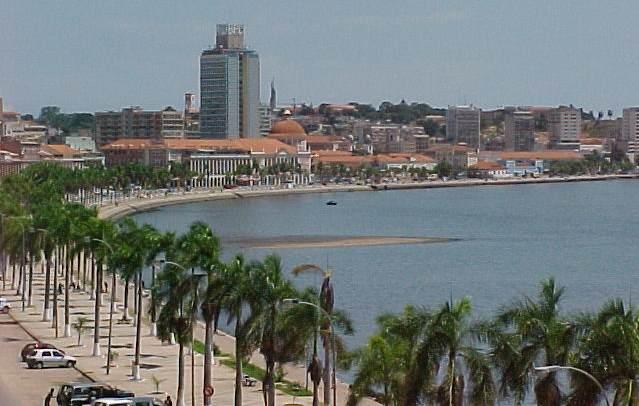Angola: the land of both rainforests and grasslands, of both
age-old African traditions and contemporary European modernities. Where for
every one kilometer of paved roads, there are nine kilometers of unpaved roads;
where you are closer to nature only to witness human destruction against it. Situated
in southwest Africa, it’s surrounded by Namibia, Zambia, Democratic Republic of
the Congo, and the Atlantic Ocean.
Angola is a former Portuguese colony, so most of the people
speak Portuguese (the official language), and that makes me happy since I’ve
studied Portuguese for years. However, many Angolans also speak native
languages as well, the most widely spoken being Umbundu, Kimbundu, Kikongo (all
of which are Bantu languages).
After declaring independence from Portugal, Angola spent
over two decades in civil war, leaving the country in economic turmoil. Still considered one of the poorest
countries in the world, much less Africa, it continues to struggle with basic
services for its people, such as access to clean water and medicine. While the
countryside itself is filled with valuable minerals and gems, such as diamond,
copper, gold, and uranium, there is little money to which develop a viable
mining industry.
The country itself is almost twice the size as the state of
Texas (US), and it’s capital is the coastal city of Luanda. While the city
itself has about 5.1 million people, the metro area has about as many people as
New York City. It actually is the 3rd largest Portuguese-speaking
city in the world, behind São Paulo and Rio de Janeiro (both in Brazil).
The country has a vast array of geographical features. There
are rainforests in the northern regions and savannas and grasslands stretching
across the central plains into the south. Angola is one of the few countries to
have an enclave. An enclave is an area of land that is separated from the main
land by another country, like Alaska is for the United States. Angola’s enclave
is Cabinda, which is separated by the Democratic Republic of the Congo. The
Zambezi River and branches of the Congo River snake their way into and through
Angola and across southern Africa. Angola is having a problem with soil erosion
and the siltation of the river systems, which is one of the main causes of
water pollution and lack of clean water. Desertification and deforestation are
also causing problems for biodiversity.
A plethora of socioeconomic and health factors plague the
country. Lack in education funding is evident with only two-thirds of the
population over age 15 being able to read and write. Only half of the
population has access to clean water and sanitation. Over 200,000 people are
living with AIDS, and there are very few doctors available in the country.
Angolans are at a high risk for major diseases such as typhoid, sleeping
sickness, malaria, and hepatitis A. In fact, over a quarter of its children are
reported underweight. That being
said, maternal mortality rate and infant mortality rate are also among the
highest in the world. Early 20s is considered middle age, with the life expectancy
being 54.
Life is especially hard for most Angolans, and it’s often
the subject of its music and poetry. But their culture is not just theirs but is
influenced by everyone who has passed through as well. And what you can also
feel is their spirit that has led them to push though and carry on, to sustain
and persevere. It’s a spirit that connects them to nature, to the land, to the
sea, and to their ancestors. It comes out in their poetry, their art, their
music, their dance, and their food. It’s Angola. And I’m really excited to
venture through this.
Up next: holidays and celebrations



No comments:
Post a Comment